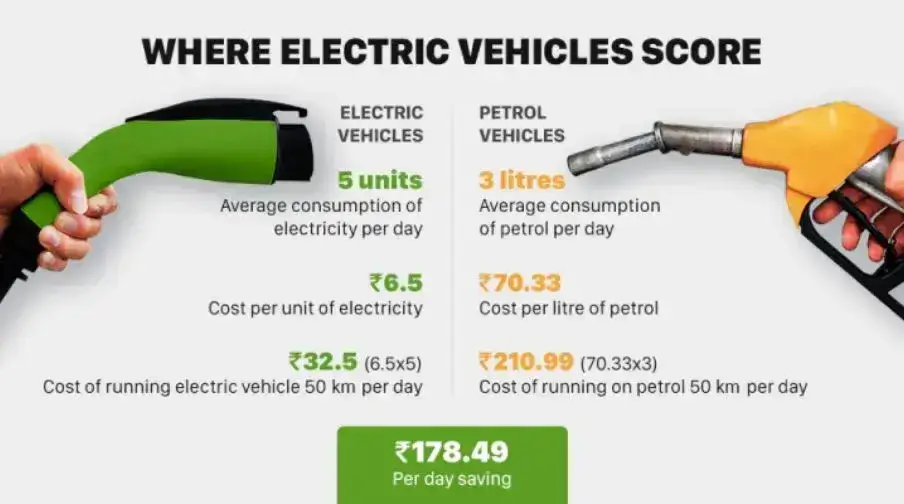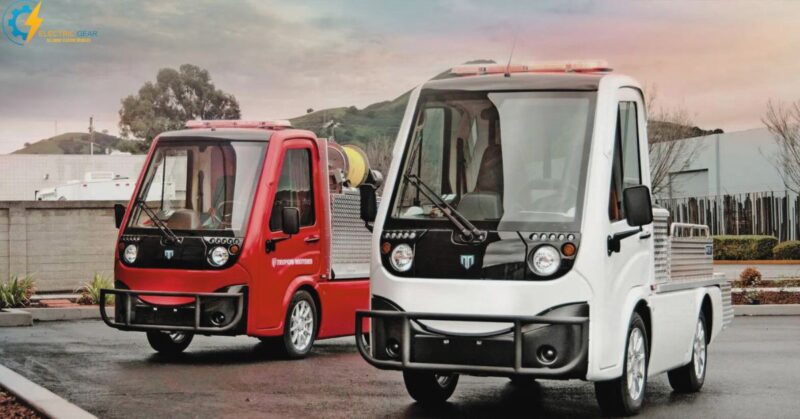We need to go green if equipped to afford the electric revolution. The auto industry has long been turning environmentally friendly. Manufacturers are trying their best to achieve echo-friendly goals set by different world organizations in the years to come.
Along with being cheaper to own and easier to operate than conventional vehicles, EVs also ensure ecological benefits in the long run.
With technological advancement penetrating the sphere, making more efficient EV batteries, considerable increases in mileage, and prevalent charging stations, more people are considering going green than ever.
It could be enticing to convert as gas prices go around $4 per gallon. Even the most efficient gas-powered vehicles are less efficient than the most inefficient electric ones when evaluated according to the EPA’s mpg-equivalent rating.
However, one must plunge deeper into it before considering buying an electric vehicle before numbering his traditional vehicle days.
Some of the less known— however necessary— ongoing and upfront EV costs are listed below.
The Hidden Cost of Owning an Electric Car
Higher Purchase Price
The Hidden Cost of Owning an Electric Car is beforehand to predict until you buy it. However, EVs are costly to buy as they have a higher initial cost.
According to Kelley Blue Book, EVs’ prices are about $10,000 higher than their equivalent gas-powered counterparts; in November, the average price of an electric vehicle was $56,500.It is about $10,000 more than the industry’s average price for electric and gas vehicles.
For example, the gasoline Hyundai Kona is $21,300, while the Kona Electric has a starting price of $34,000.
It can, however, be safely predicted that purchasing an EV is still significantly more expensive than their gasoline counterparts.
Depreciation
Vehicles degrade and depreciate over time and hence, lose value. EVs, too, are no exception and are prone to depreciation. EVs’ tendency to depreciate is even more, and it’s 52% per three years compared to gas-powered equivalents losing about 35% of their value.
According to the Auto Week report, some EVs are even more prone to this tendency and may lose 60% of their value.
That roughly means that after driving, your $60,000 Mach-E will be less than $18,000 worth after three years.
Repair Bills
Even though EVs have fewer moving parts and take enough time to depreciate, they cost much more to repair than their counterparts.
According to estimates, repairs for EVs, on average, are 1.6 to 2.3 times higher than the equivalent gas-powered vehicles due to the higher prices of parts, labor, and prolonged time taken to diagnose the problem.
EV tax evasions may not be for good
The Inflation Reduction Act is among the hidden costs of owning an electric car, featuring new tax evasions of up to $7,500 for people purchasing an EV.
However, relaxation is related to some conditions in most cases. The vehicle must be assembled within the periphery of North America to become eligible for those relaxations.
Imposition of VMT Taxes on Electric Vehicles
Although it seems economical to keep an EV in the long run, the imposition of the “vehicle miles traveled” tax, known as VMT, may cost you a little more than expected.
This fee may intend to replace the government’s earnings if it would otherwise earn from gas-powered vehicles by imposing a gasoline tax.
Implementing VMT fees in some states like Oregon and Illinois is already underway.
Considering the projected widening of 19 million EVs in the US by the year 2035, it becomes clear that those EV owners would not pay the federal gas fee, which is mandatory to keep the State Highway Trust Fund solvent.

Higher Registration Fees
Higher registration fees may contribute significantly towards the hidden cost of owning an electric car. Going electric deprives the state of collecting certain taxes from ICE’s owners.
These are imposed on gasoline and are spent on improving related infrastructure. EV owners, thus not go to fuel stations and do not pay the said taxes.
The government has increased the EV registration duty to collect the tax, which will later be used to improve related infrastructure.
Battery Replacement
The fear of replacing a battery when it expires makes people think several times before going electric because it’s one of the hidden costs of owning an electric car.
EV batterie’s average mileage is between 100,000 to 150,000 miles, and the range is rapidly improving with technological advancement, but the fear remains the same. This is because the battery replacement may cost, on average, from $10,000 to $20,000.
Lose Range Over Time
Some EV models are more prone to climate change and reduce power in severe cold. However, Tesla, Hyundai, and Jaguars retain more than 94% of their Environmental Protection Agency range in cold weather. Ford Mustang Mach E, in contrast, loses slightly over 30% of its EPA range.
EV range performs differently in cold climates and reduces over time because its battery degrades the time passes, You will pay the same amount of energy to charge the battery, but you will be able to travel less range.
Low Resale Value
EV resale value may be a fact that is unfamiliar to date and must be known before going electric. People are familiar with gas-powered vehicles, which is why the sale and purchase of used electric vehicles are less popular.
EVs, on the contrary, are lesser in numbers than ICEs and have yet to reach that level. No one quickly buys a used or pre-owned EV due to some— certainly not all— under given reasons.
- EV batteries are more prone to lose range over time.
- Only the first owner receives a tax credit of $7,500.
- The battery runs out of warranty over time.
Unavailability of Spare Parts
According to a report published by the New York Times, the unavailability and shortage of EV batteries and some other parts like semiconductors have made them comparatively more expensive to repair. The scarcity of qualified technicians is another problem for an EV owner.
Charging Costs
Charging an EV at some public charging stations is far more costly than charging an EV battery at home.
Here are several examples:
Some other public rates in comparison to home charging are listed here.
- In California, for instance, people are obliged to pay an average of about $16 for fast charging, which would cost around $7 at home.
- Arkansas averages 12 cents at home compared to 12 to 32 cents in public charging.
- The average home rate for Florida is 11.36 cents per kWh, while Electrify America charges between 31 and 43 cents per kWh.
Installation of level 2 or level 3 chargers may cost you as much as $300 to $35,000 With complete empowered equipment. Level 1 at-home fuel stations can be at an affordable price.
However, these chargers tend to charge very slowly, and it can take days for the battery to charge fully. However, one should not go for the luxury of at-home charging initially.
Here is a table that provides an estimate of the charging costs for electric vehicles at different charging levels:
| Charging Level | Cost per kWh | Cost for Full Charge (60 kWh Battery) | Cost for 80% Charge (60 kWh Battery) |
|---|---|---|---|
| Level 1 (120V) | $0.10 – $0.20 | $9.00 – $18.00 | N/A |
| Level 2 (240V) | $0.10 – $0.50 | $6.00 – $30.00 | N/A |
| Level 3 (DCFC) | $0.30 – $0.60 | N/A | $18.00 – $36.00 |
Your Time
It would take almost eight hours to fully charge the 75kWh battery of the Tesla Model Y with a Level 2 charger at home.
However, the superfast charging station of Tesla fills the same in about 30 minutes. While it takes 30 minutes to charge fully, that is still longer than to fill a gas car at the pump.
Here is the intangible cost that may affect you heavily when you lose your precious time filling the battery because if you are away from the fast charger, the charging time may be extended to 8 to 12 hours.
Charging Equipment
After purchasing an EV, the next step is to consider installing at least a Level 2 charger at home. Its cost may vary; however, it can be made functional for $700 or up.
Level 1 charger is provided with most electric vehicles, but its charging is too slow that it may take days to charge the battery fully.
Here’s why EVs Are Still Cheaper than Gas Cars
Although the abovementioned factors predict that owning an EV is more costly, it is still cost-effective. One can save up to $10,000 over the vehicle’s lifetime compared to an equivalent gas vehicle.

Maintenance Cost
Periodic maintenance of electric vehicles is far cheaper than their conventional counterparts because they have fewer moving parts and less wear and tear. EV maintenance costs around $900, against $1,300 for gasoline vehicles over the year.
If you generally use regenerative braking, they never need an oil change, air filters, belts, transmission oil, or brake fluids. According to an estimate, one may save up to $1,000 on annual maintenance.
Fuel-Saving
EV owners, while charging at home with a Level 2 charger, can save an average of $9,00 to $1,000 annually as they don’t need costly fuel for their vehicles.
Buying Used Vehicles
Buying a used electric vehicle can cost you as little as 50% of the new vehicle’s price. Some EVs are believed to lose over %60 of their value in three years, and one can save money when purchasing a pre-owned vehicle. But by doing you may face some issues in the long run regarding its mileage and battery.
Battery leasing
People may avoid buying an EV due to its high purchasing cost. Manufacturers are, however, introducing the policy of buying the vehicle while leasing the battery.
It may reduce the potential price of an EV by 30% to 40% lower than the vehicle’s original price. More people will consider buying an EV if its purchasing cost reduces considerably in the way mentioned above.
Are Electric Cars Cost-Effective?
EVs are easier to keep in the long run but costly to purchase. People generally consider using these vehicles more economical than their gas-powered equivalent; however, there are some additional costs associated with them.
EVs still have some less-known parts to repair and complicated systems to maintain. Electricity rates for battery charging vary considerably, and insurance may cost you heavily.
The hefty amount paid as purchase cost is irritating, and the fear of gradually losing range and the nightmare of ever replacing the battery run parallel.
However, it may have brighter prospects in the long run because it costs $300 to $400 annually to charge the EV battery compared to $1,000 to $2,500 during the same time.
If you are willing to keep your EV for at least a few years, saving on fuel and spending less on maintenance makes you feel good.
Furthermore, owning an EV will increase your fair share toward a cleaner and greener environment.
Time to go…Green
We have already done with the environment to the extent that seasonal swings are becoming more frequent. Wind and rain patterns have changed, and glaciers are melting more quickly due to worldwide temperature increases.
Internal combustion engines have remained the critical partner in emitting GHGs. We all have done our best to make the environment dirty to live in, and now it’s high time to do our fair share to make it clean and green. Going electric makes sense because clean electricity is green electricity.
Final Thought
While electric cars are generally known as more cost-effective and environmentally friendly than traditional gasoline cars, there are still hidden costs associated with their ownership.
Prospective buyers should know these costs before buying, including higher purchase prices, battery replacement costs, and installing home charging stations.
Additionally, repairs for electric cars may be more expensive due to the specialized nature of the technology. Finally, producing and disposing of electric car batteries can have environmental impacts.
Understanding these costs is crucial in deciding whether an electric car suits your needs and budget.

Imran is an experienced content writer who crafts engaging and informative articles for a variety of industries. With a keen eye for detail and a passion for storytelling, Imran delivers high-quality content that resonates with readers. Whether he’s writing blog posts, social media content, or website copy, Imran is committed to delivering compelling content that drives results.







